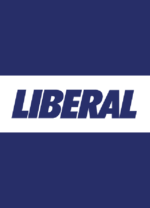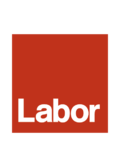South Australian state election, 1979
| | ||||||||||||||||||||||||||||||||||||||||||||
| ||||||||||||||||||||||||||||||||||||||||||||
| ||||||||||||||||||||||||||||||||||||||||||||
| ||||||||||||||||||||||||||||||||||||||||||||
State elections were held in South Australia on 15 September 1979. All 47 seats in the South Australian House of Assembly were up for election. The incumbent Australian Labor Party led by Premier of South Australia Des Corcoran was defeated by the Liberal Party of Australia led by Leader of the Opposition David Tonkin.
A Norwood by-election was held due to the seat's election result being overturned by a court decision, which saw the seat lost from the Liberals to Labor, which meant the Liberals held 24 seats with Labor on 20 seats.
| Party | Votes | % | Swing | Seats | Change | |
|---|---|---|---|---|---|---|
| Liberal Party of Australia | 352,343 | 47.94 | +6.73 | 24 | +7 | |
| Australian Labor Party | 300,277 | 40.86 | -10.78 | 20 | -7 | |
| Australian Democrats | 60,979 | 8.30 | +4.82 | 1 | 0 | |
| Nationals SA | 14,013 | 1.91 | +0.31 | 1 | 0 | |
| Independent | 7,364 | 1.00 | +0.61 | 1 | +1 | |
| Total | 734,976 | 47 | ||||
| Liberal Party of Australia | WIN | 55.00 | +8.40 | 26 | +6 | |
| Australian Labor Party | 45.00 | -8.40 | 21 | -6 | ||
Independent: Norm Peterson
Background
Premier Don Dunstan abruptly resigned on 15 February 1979 due to ill health, and was succeeded by Deputy Premier Des Corcoran.
Spurred by positive opinion polls and seeking to escape the shadow of Dunstan, Corcoran called a snap election (without pre-informing the party apparatus) in order to gain a mandate of his own. The election campaign was plagued by problems, which allowed an opening for the Liberals under Tonkin. It didn't help matters that The Advertiser was biased toward the Liberal campaign.
Labor suffered a large swing, losing eight seats to the Liberals. The Liberals also won 55 percent of the two-party vote to Labor's 45 percent. In most of Australia, this would have been enough for a landslide Liberal victory. However, most of the Liberal margin was wasted on massive landslides in rural areas. The Liberals only won 13 seats in Adelaide, netting them a total of 26 seats, a bare majority of two. Narrow as it was, it was the first time the main non-Labor party in South Australia had won the most seats while also winning a majority of the vote since the Liberal and Country League won 50.3 percent of the two-party vote in 1959.
Corcoran was bitter in defeat, believing sections of the ALP had undermined him during the campaign. He resigned as leader soon after the election, and retired from politics in 1982.
In the South Australian Legislative Council, the sole balance of power was held unbroken by the Australian Democrats from their inception in mid-1970s, until the late 1990s. Though the Democrats would exceed 16 percent of the vote at the 1997 election, during the following term the Democrats would lose the sole balance of power for the first time, sharing the balance of power with independent members, slowly losing numbers and influence, until they were eventually without parliamentary representation as of the 2010 election.
Post-election pendulum
One of the seats lost to the Liberals had been Dunstan's old seat of Norwood. However, in 1980, a court overturned Liberal Frank Webster's victory, triggering a 1980 Norwood by-election. Greg Crafter regained the seat for Labor, reducing the Liberal government to 24 seats, a one-seat majority. A 1982 Mitcham by-election and 1982 Florey by-election were triggered, the Democrats retained Mitcham by 45 votes, Labor increased their margin in Florey.
| LIBERAL SEATS (24) | |||
| Marginal | |||
| Henley Beach | Bob Randall | LIB | 1.0% |
| Mawson | Ivar Schmidt | LIB | 3.0% |
| Todd | Scott Ashenden | LIB | 4.6% |
| Brighton | Richard Glazbrook | LIB | 4.7% |
| Morphett | John Oswald | LIB | 5.3% |
| Mount Gambier | Harold Allison | LIB | 5.6% |
| Newland | Brian Billard | LIB | 5.9% |
| Fairly safe | |||
| Mallee | Peter Lewis | LIB | 7.3% v NAT |
| Eyre | Graham Gunn | LIB | 9.9% |
| Safe | |||
| Torrens | Michael Wilson | LIB | 10.1% |
| Coles | Jennifer Adamson | LIB | 12.0% |
| Rocky River | John Olsen | LIB | 13.1% |
| Chaffey | Peter Arnold | LIB | 13.8% |
| Hanson | Heini Becker | LIB | 14.5% |
| Murray | David Wotton | LIB | 15.9% |
| Glenelg | John Mathwin | LIB | 17.2% |
| Light | Bruce Eastick | LIB | 17.2% |
| Victoria | Allan Rodda | LIB | 18.0% |
| Fisher | Stan Evans | LIB | 18.7% |
| Bragg | David Tonkin | LIB | 21.5% |
| Alexandra | Ted Chapman | LIB | 24.0% |
| Kavel | Roger Goldsworthy | LIB | 24.3% |
| Goyder | Keith Russack | LIB | 27.1% |
| Davenport | Dean Brown | LIB | 29.7% |
| LABOR SEATS (20) | |||
| Marginal | |||
| Ascot Park | John Trainer | ALP | 1.7% |
| Unley | Gil Langley | ALP | 2.3% |
| Norwood* | Greg Crafter | ALP | 3.1% |
| Florey | Harold O'Neill | ALP | 3.7% |
| Albert Park | Kevin Hamilton | ALP | 3.9% |
| Mitchell | Ron Payne | ALP | 4.3% |
| Hartley | Des Corcoran | ALP | 5.1% |
| Playford | Terry McRae | ALP | 5.1% |
| Gilles | Jack Slater | ALP | 5.4% |
| Baudin | Don Hopgood | ALP | 5.7% |
| Fairly safe | |||
| Peake | Keith Plunkett | ALP | 7.8% |
| Napier | Terry Hemmings | ALP | 9.5% |
| Safe | |||
| Price | George Whitten | ALP | 10.5% |
| Adelaide | Jack Wright | ALP | 10.7% |
| Salisbury | Lynn Arnold | ALP | 10.8% |
| Elizabeth | Peter Duncan | ALP | 10.9% |
| Whyalla | Max Brown | ALP | 16.7% |
| Stuart | Gavin Keneally | ALP | 17.0% |
| Ross Smith | John Bannon | ALP | 18.4% |
| Spence | Roy Abbott | ALP | 20.2% |
| CROSSBENCH SEATS (3) | |||
| Mitcham | Robin Millhouse | DEM | 4.7% v LIB |
| Semaphore | Norm Peterson | IND | 12.2% v ALP |
| Flinders | Peter Blacker | NAT | 20.1% v LIB |
Legislative Council results
| 1979 Legislative Council Result) | |||
| Party | Seats | ||
| Liberal Party of Australia | 50.6% | 6 | |
| Australian Labor Party | 39.7% | 4 | |
| Australian Democrats | 6.5% | 1 | |
| Nationals SA | 1.1% | 0 | |
| Australian Marijuana Party | 0.8% | 0 | |
| 1979-1982 Legislative Council | |||
| Party | Seats | ||
| Liberal Party of Australia | 11 | ||
| Australian Labor Party | 10 | ||
| Australian Democrats | 1 | ||
For this election, the electoral system used for the Legislative Council was a party-list proportional representation system, with elements of the single transferable vote. Voters voted preferentially for party lists. All parties below the threshold of 50% of the Droop quota had their votes transferred to the next preference on the ballot paper for a party above the threshold. Seats were then distributed to parties using the largest remainder method with the Droop quota.
The two Liberal Movement members elected in 1975 had rejoined the Liberal Party.
In 1982, Labor MLC Norm Foster resigned from the Labor Party (to vote in favour of the Olympic Dam development) and sat the remainder of his term (until the 1982 election) as an independent.
See also
- Results of the South Australian state election, 1979 (House of Assembly)
- Results of the South Australian state election, 1979 (Legislative Council)
- Members of the South Australian House of Assembly, 1979-1982
- Members of the South Australian Legislative Council, 1979-1982
References
- History of South Australian elections 1857-2006, volume 1: ECSA
- Historical lower house results
- Historical upper house results
- State and federal election results in Australia since 1890

